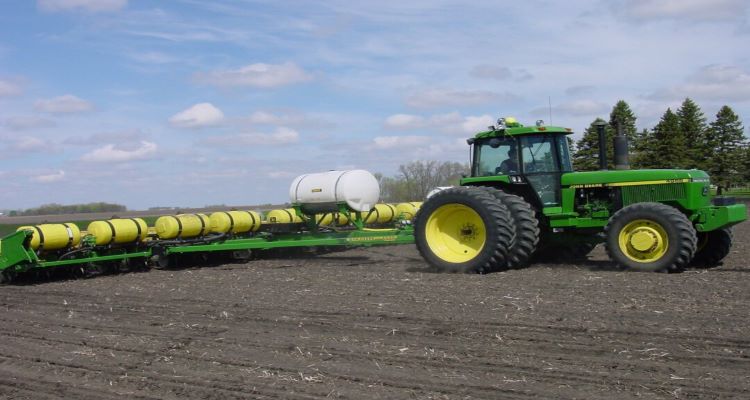February 14, 2022

While some farmers traditionally fertilize in the fall, in-season nitrogen applications offer may benefits, including maximizing fertilizer dollars amid record-breaking prices.
A lot can happen to a field between a fall fertilizer application and spring planting. In-season applications not only provides nutrients when the crop needs them, but can also minimize fertilizer loss. This approach can help maximize fertilizer ROI while minimizing risk of fertilizer loss.
As growers throughout the Midwest continue to plant earlier and into cooler soils, starter fertilizer placed near the developing seed can provide easily accessible nutrients. These nutrients tend to stay near the seed until soil conditions improve and an adequate root system is established, giving the seed an instant boost.
Weather conditions must be considered when applying fertilizer in season. Nitrogen modeling software can predict leaching or denitrification rates, factor in weather events and recommend how much nitrogen to apply to meet yield goals.
“When it comes to fertilizer applications, always keep in mind the four Rs,” said Mike Koenigs, Pioneer Market Development Specialist. “Knowing the right source, the right rate, the right application timing and the right placement will ensure you’re getting the most value out of your fertilizer.”
Applying fertilizer a few weeks before spring planting helps ensure nitrogen is available when the crop needs it. Farmers who apply in the spring often find they need less fertilizer because they aren’t compensating for winter losses.
Finally, don’t sacrifice macros for micros. Consider the cost-benefit ratio of micro-fertilizer packages in the overall context of your entire fertilizer bill and soil fertility rates. Micros can take yields over the top but crops still need their primary fertilizer needs met first.
Source: Corteva Agriscience, which is solely responsible for the information provided and is wholly owned by the source. Informa Business Media and all its subsidiaries are not responsible for any of the content contained in this information asset.
About the Author(s)
You May Also Like






